History
2019
Day 05
May 20
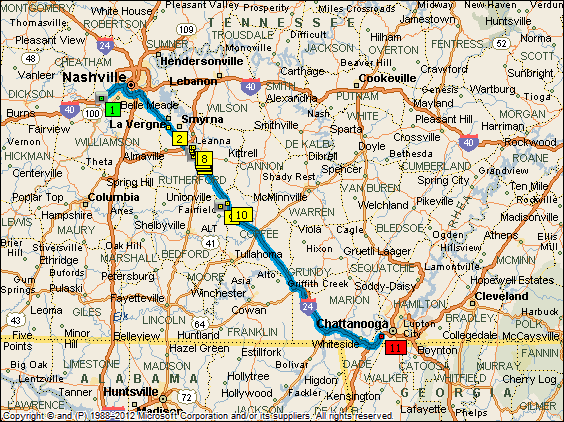
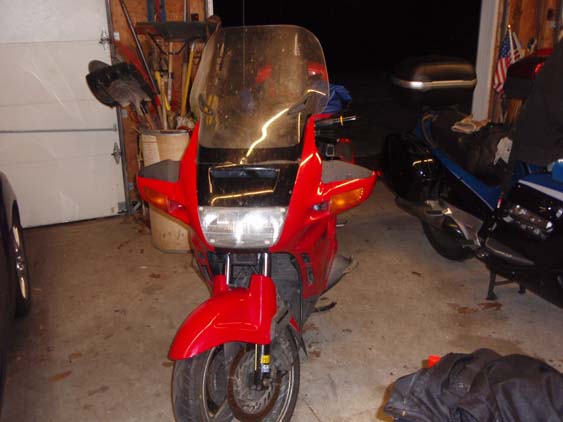
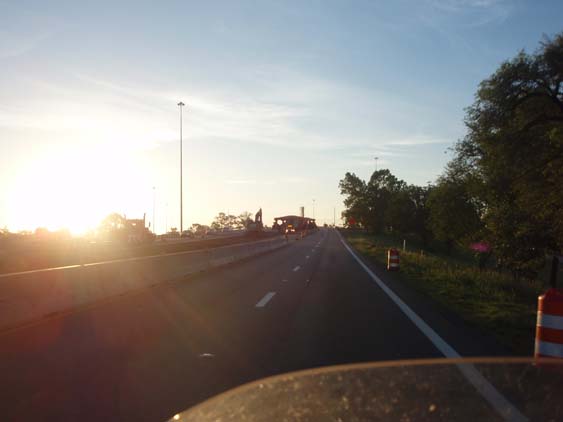
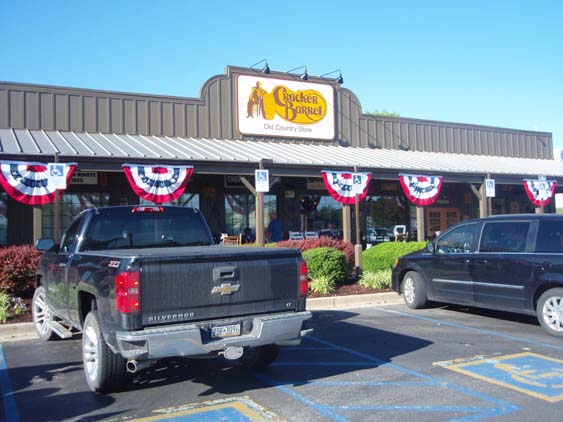
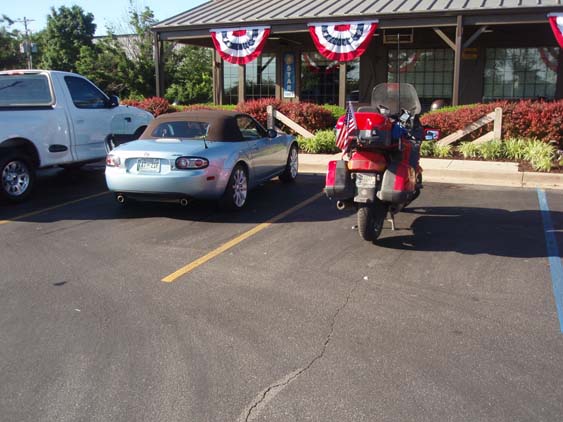
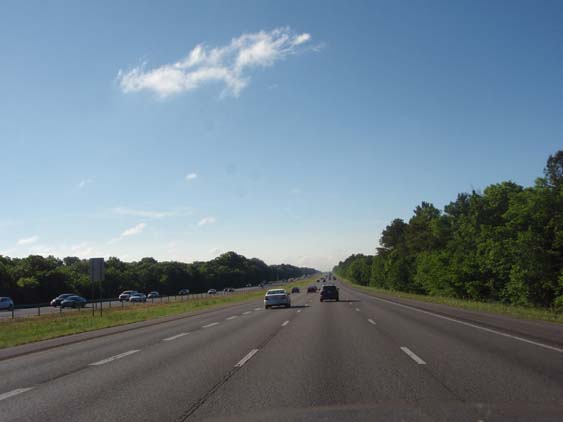
When I was doing research to find JKP's location at this battle, it was a series of fortunate coincidences colliding to give me that information. The commanding general, Patrick Cleburne set up his headquarters in the McCulloch house. Fortunately, I found an article about the efforts of a preservation group trying to save the house from demolition. After close examination, they decided there was not enough of the original house left so it was torn down to build condominiums. But the good thing was that they gave the street address of the house so I could locate it. Then I found the battle order which gives which units fought under the direction of Cleburne which included the 17th of Tennessee (JKP's unit). From studying the previous records I knew that the 17th and the 23rd always fought side by side. Then I found notes from LT. Colonel Keeble, commander of the 23rd confirming they marched right through the yard of the house -
Battle order - 17th was
the third of four brigades under Cleburne
Cleburne's Division
MG Patrick R. Cleburne
Third (Johnson's) Brigade
BG Bushrod R. Johnson
17th Tennessee: Col Albert S. Marks (w), Ltc Watt W. Floyd
23rd Tennessee: Ltc Richard H. Keeble
25th Tennessee: Col John M. Hughs (w), Ltc Samuel Davis
37th Tennessee: Col Moses White (w), Maj Joseph T. McReynolds (k), Cpt
Charles G. Jarnagin
44th Tennessee: Col John S. Fulton
Jefferson (Mississippi) Artillery: Cpt Putnam Darden
23rd Tennessee Infantry Stone's River after battle report:
Report of Lieut. Col. R. H. Keeble, Twenty-third Tennessee Infantry.
JANUARY 5, 1863.
The following report
of the part taken by the Twenty-third Tennessee
Regt. in the battle of Murfreesborough is respectfully submitted:
Having been changed from
the right to the left wing on the evening
before the battle, its position was in an open field, the left resting
upon
the road leading to the McCulloch house. On the morning of the battle,
the brigade and division made a right-wheel, in doing which it passed
the house above referred to and continued to wheel and march until its
course was almost at right angles with the one it held the evening
before, marching in its wheel through a large corn-field and a meadow.
This placed JKP somewhere in the yard of the house on the first day of the battle.
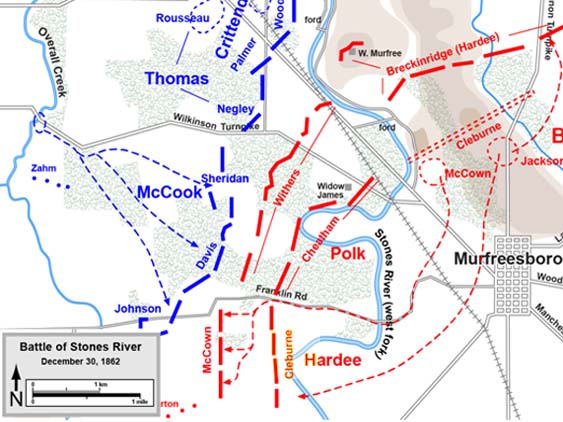
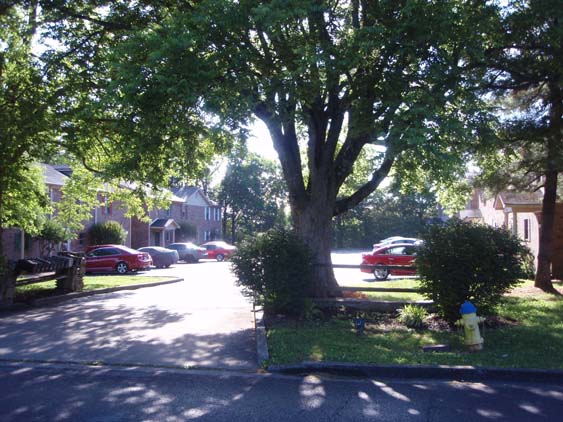
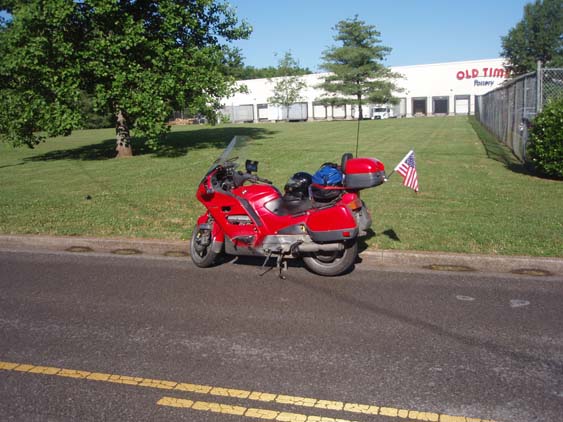
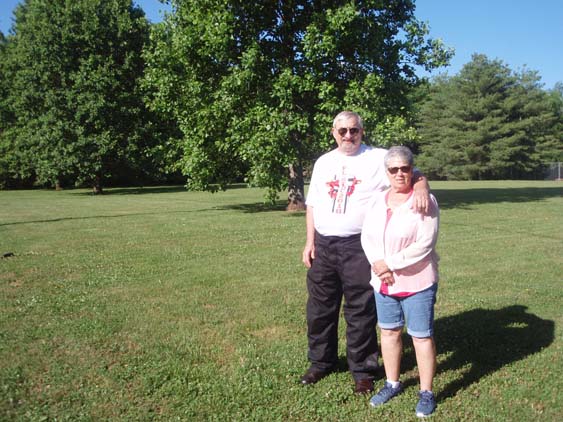
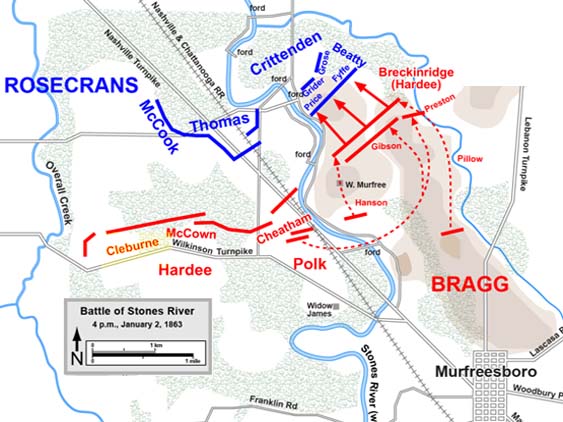
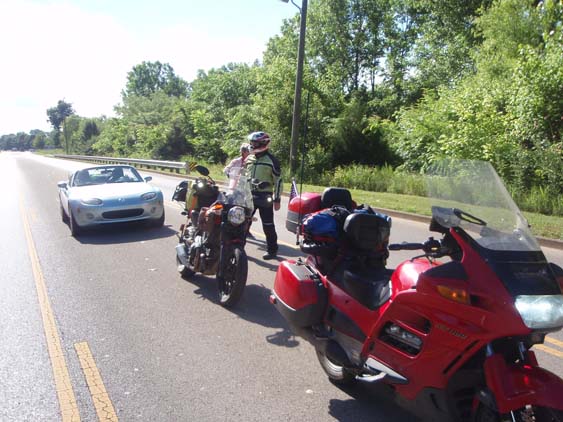
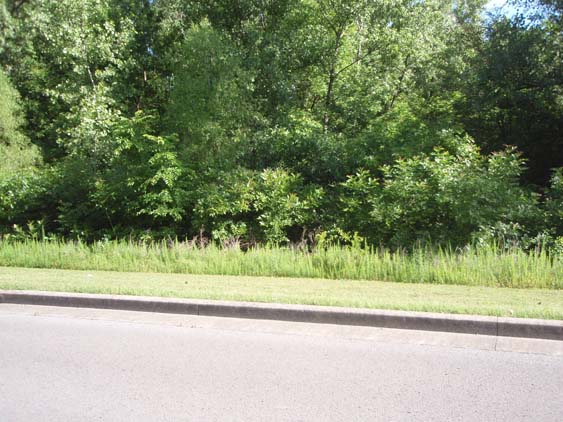
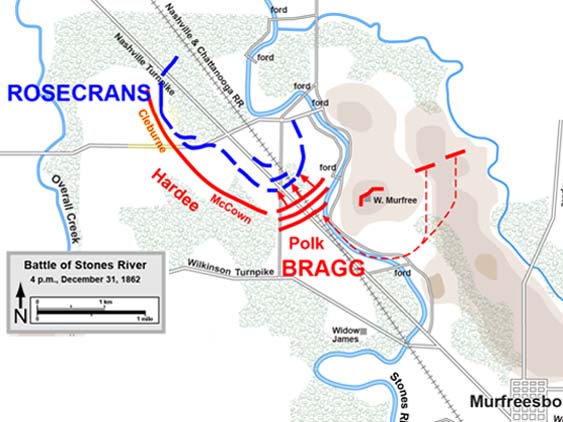
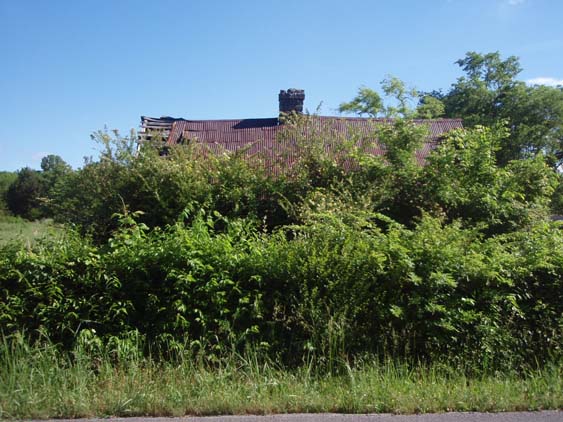
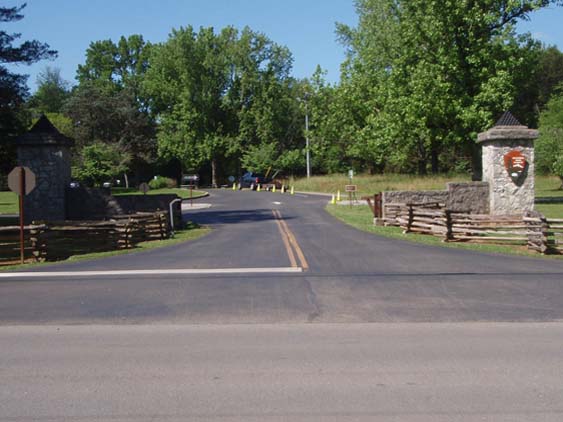
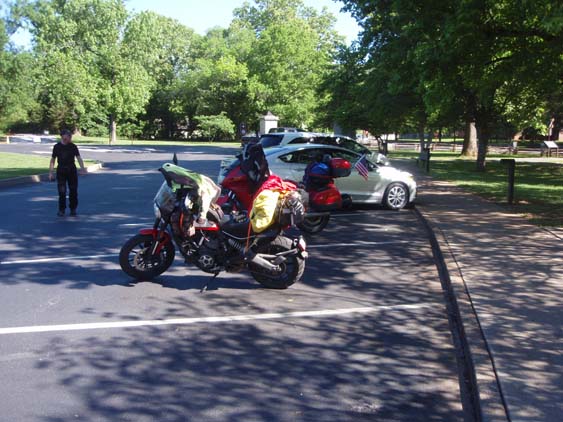
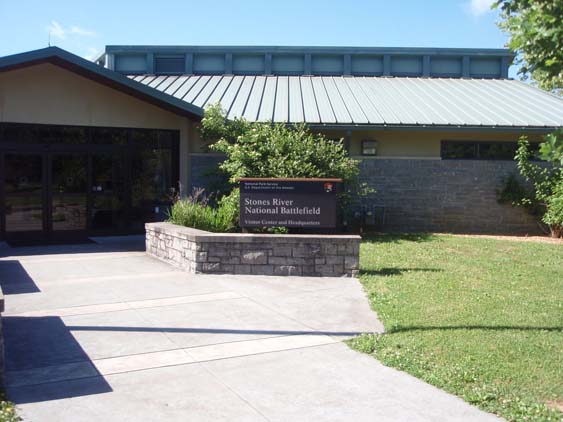
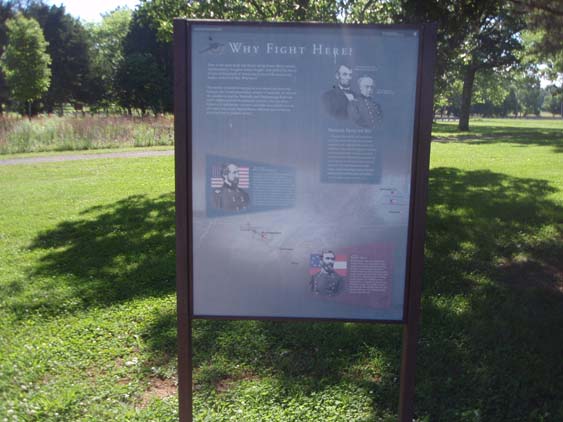
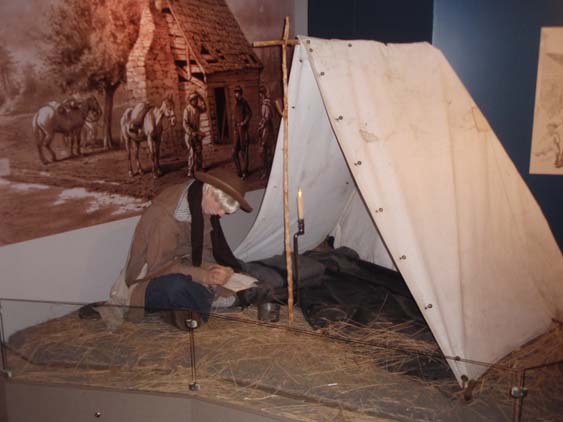
One thing I was excited to see was a picture of Sam Watkins from Mount Pleasant, Tennessee near where I grew up. After the war, he wrote a series of articles for the local newspaper from his recollections of the war. The articles were later combined into a book called 'Company Aytch' which gives a unique perspective of the war from a man that was a simple foot soldier. As he says in his writings -
The histories of the
Lost Cause are all written out by "big bugs,"
generals and renowned historians, and like the fellow who called a turtle
a "cooter," being told that no such word as cooter was in Webster's
dictionary, remarked that he had as much right to make a dictionary as
Mr. Webster or any other man; so have I to write a history.
But in these pages I do not pretend to write the history of the war.
I only give a few sketches and incidents that came under the observation
of a "high private" in the rear ranks of the rebel army. Of
course,
the histories are all correct. They tell of great achievements of great
men, who wear the laurels of victory; have grand presents given them;
high positions in civil life; presidents of corporations; governors of
states; official positions, etc., and when they die, long obituaries are
published, telling their many virtues, their distinguished victories,
etc., and when they are buried, the whole country goes in mourning and
is
called upon to buy an elegant monument to erect over the remains of so
distinguished and brave a general, etc. But in the following pages I
propose to tell of the fellows who did the shooting and killing, the
fortifying and ditching, the sweeping of the streets, the drilling,
the standing guard, picket and videt, and who drew (or were to draw)
eleven dollars per month and rations, and also drew the ramrod and tore
the cartridge.
His unit fought in many of the same battles as the 17th Tennessee Infantry where JKP was assigned. This is his observation of part of this particular battle -
Now, another fact I will
state, and that is, when the private soldier was
ordered to charge and capture the twelve pieces of artillery, heavily
supported by infantry, Maney's brigade raised a whoop and yell, and
swooped down on those Yankees like a whirl-a-gust of woodpeckers in a
hail storm, paying the blue coated rascals back with compound interest;
for when they did come, every man's gun was loaded, and they marched upon
the blazing crest in solid file, and when they did fire, there was a
sudden lull in the storm of battle, because the Yankees were nearly all
killed. I cannot remember now of ever seeing more dead men and horses
and captured cannon, all jumbled together, than that scene of blood and
carnage and battle on the Wilkerson turnpike. The ground was literally
covered with blue coats dead; and, if I remember correctly, there were
eighty dead horses.
Wilkerson Turnpike was our second stop of the day.
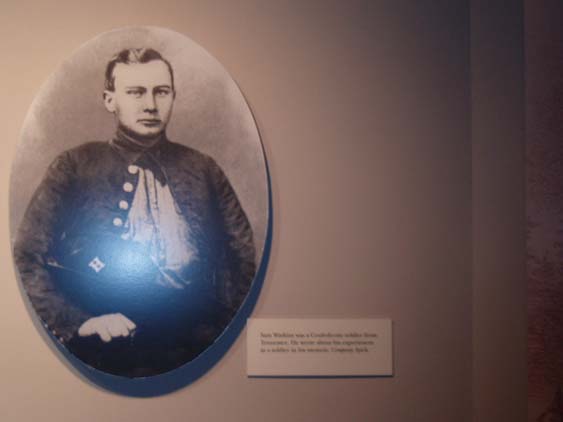
Two places mentioned in the battle histories are the Slaughter Pen and Hell's Half Acre -
All three of Sheridan's brigade commanders were killed or mortally wounded and many Federal units lost more than one-third of their men. Many Confederate units fared little better. Union soldiers recalled the carnage as looking like the slaughter pens in the stockyards of Chicago. The name stuck. By 10 a.m., many of the Confederate objectives had been achieved. They had captured 28 guns and over 3,000 Union soldiers.
The carnage as described
by J. Morgan Smith of the Thirty-second Alabama Infantry prompted soldiers
to name the field Hell's Half Acre.
"We charged in fifty yards of them and had not the timely order of
retreat been given - none of us would now be left to tell the tale. …
Our regiment carries two hundred and eighty into action and came out with
fifty eight."
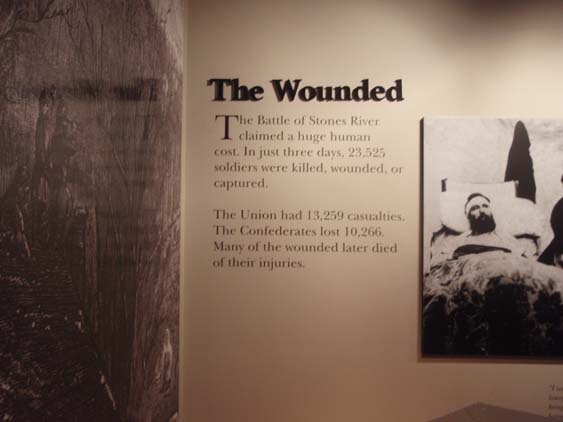
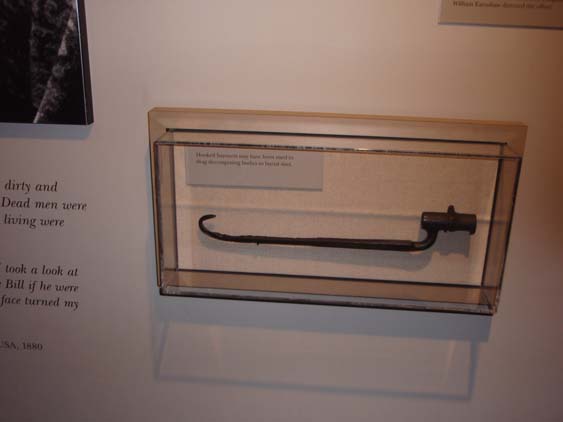
This is the uniform jacket of Private Henry Hall who was killed when a cannon ball ripped both his legs from his body on the last day of the battle. This is a letter written to his mother by a friend and fellow soldier -
Manchester Tenn, Feb 9th 1863
Dear Mrs. Hall
As an opportunity offers itself to send a letter through to you. I conclude
to write you feeling it a duty to give you information in regard to Henry,
who you have doubtless been informed met his fate on the field of Murfreesboro.
He was killed almost instantly by a cannon ball passing through both thighs,
severing his legs from his body, on Friday the 2nd of January. It being
almost dark and us being compelled to retire from the field, I am sorry
to say his body fell in the hands of the enemy. I did not see him myself
after he was killed, we was seperated during the battle.
I heard he was killed before the battle was over and tried to recover
his body, but could not find it. I was very much grieved to leave him
on the field, but under the circumstances it could not be otherwise. Henry
and myself have associated together for several years and I always found
in him a kind and faithful friend.
You can imagine, Mrs. Hall, how much I am grieved for him, but we should
not morn now he is dead. The hand of God has cut him down, and I hope,
taken his soul from this world of sorrow to Himself above, where he may
enjoy eternal bliss.
You must not grieve for Henry, but only think of the thousands of mothers
in your condition made so by the implacable enemy who seeks to destroy
our liberty and enslave us. Your son died a martyr, nobly laying down
his life for his country. He was a good boy and a good soldier. He will
ever live in the memory of his comrades, whose fortunes it may be to survive
this bloody war.
I will close as I believe I have written all of which I know of the subject,
painful as it is for me to speak or even think of. Virgil was wounded
slightly, but has recovered entirely and is in good health.
From Yours Truly
H.F. Nuckols 4th KY
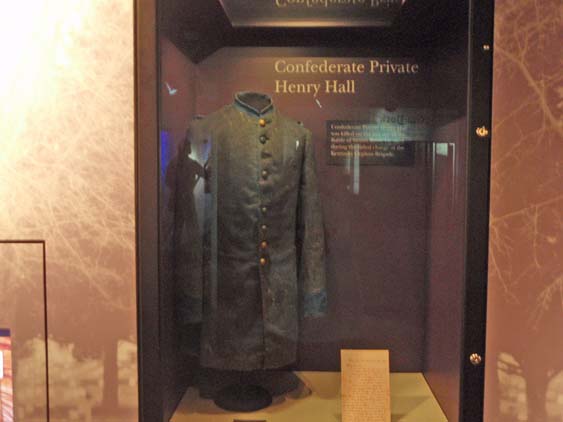
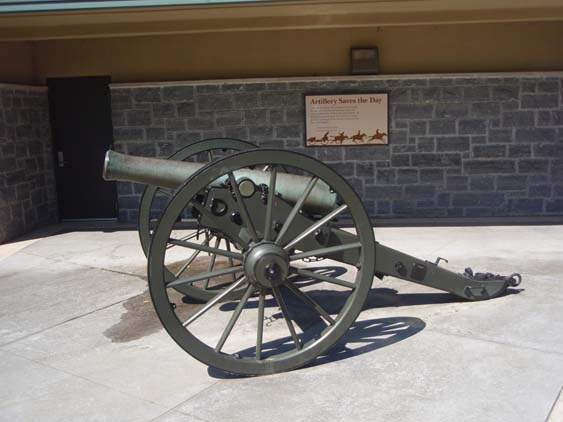
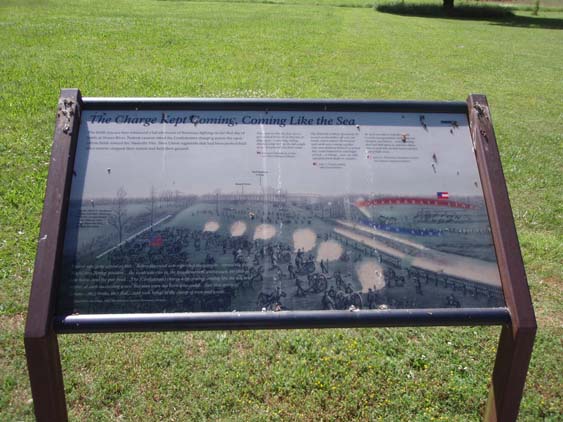
in the field in front of us. One thing we do begin to understand after visiting several of these battlefields is just how arrogant and uncaring the Confederate General Braxton Bragg was in real life. He often sent his men across open fields against fortified positions with no concern about casualties. Bragg treated them as if they were expendable resources, seldom did reconnaissance work to determine the enemy locations and plans, always blamed someone else when his plans failed and then did not understand why his officers and men did not respond quickly to his orders. (I feel certain that I have often encountered his 'descendants' in many corporate settings.) One of the few times his forces won the battle, he could not believe that the Union forces were still there. After all, he won the battle (of course at great cost of men and resources), so they should have left. He was quick to severely punish any soldier for any reason that he decided to use. An excerpt from "Company Aytch" by Sam Watkins tells us -
Well, here we were, again "reorganizing," and after our lax discipline on the road to and from Virginia, and after a big battle, which always disorganizes an army, what wonder is it that some men had to be shot, merely for discipline's sake? And what wonder that General Bragg's name became a terror to deserters and evil doers? Men were shot by scores, and no wonder the army had to be reorganized. Soldiers had enlisted for twelve months only, and had faithfully complied with their volunteer obligations; the terms for which they had enlisted had expired, and they naturally looked upon it that they had a right to go home. They had done their duty faithfully and well. ... From this time on till the end of the war, a soldier was simply a machine, a conscript. It was mighty rough on rebels. We cursed the war, we cursed Bragg, ... All our pride and valor had gone, and we were sick of war
Union generals were pretty quickly removed if they did not gain success on the field. We find out that Bragg was a good friend of Confederate President Jefferson Davis which explains why he was not removed until it was too late to do any good.
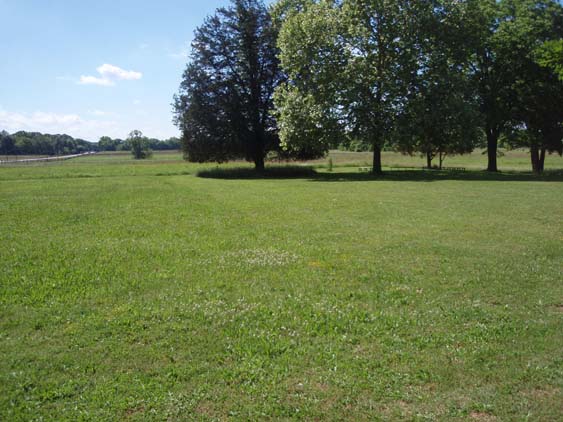
As we make our way back out to our rides, we see a car with two lovely poochie dogs, Daisy and Tucker. They immediately sense that I am a practiced dog petter and allow me to minister to them. Tucker says -
"I'll give you 30 minutes to stop that" or at least that's what I understand him to say. Their human tells us that they are both rescue dogs and it sure looks like they have finally found a good home.
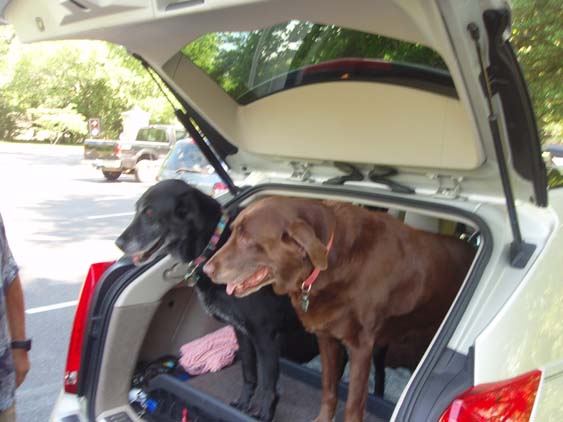
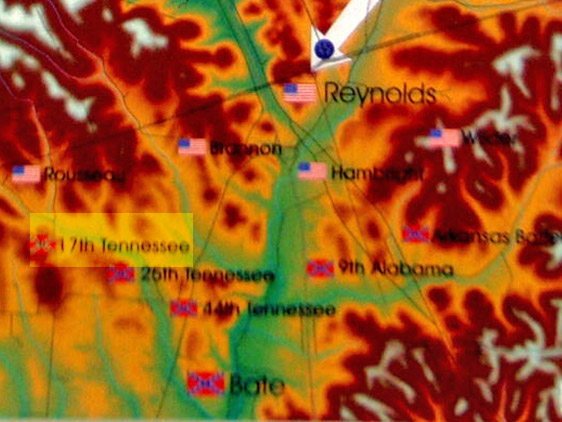
Locating his actual location on this battlefield was a real challenge. His unit played more of a supporting roll in this battle. But with some very careful topological work, I have located the site that his unit occupied during the battle. It is about 1 1/2 miles from the center point of the action, on the hilltop to our left. Sissy and Andy, who probably have better sense than me, decide they will pass on climbing over a barbwire fence and tramping up a steep hill through waist high undergrowth.
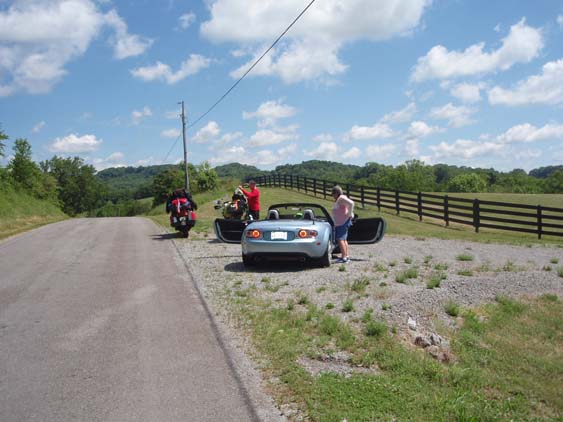
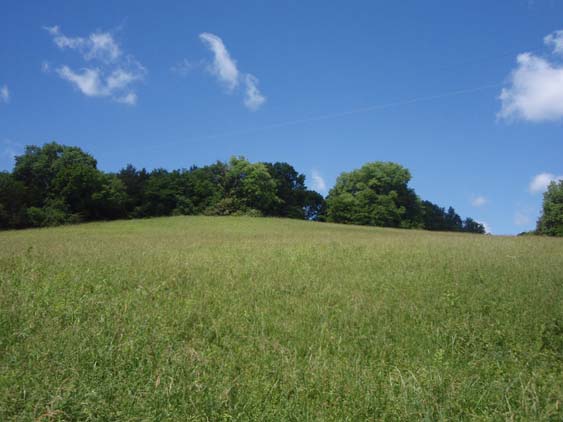
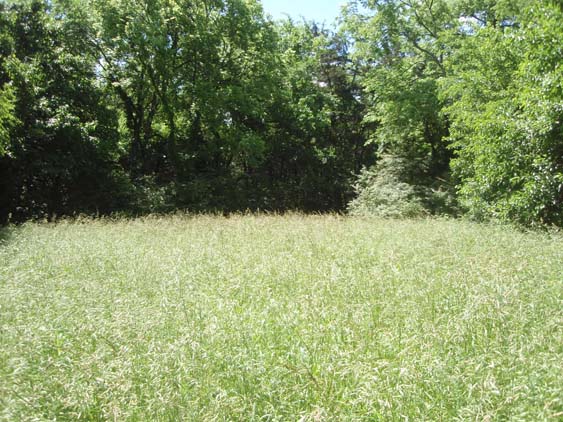
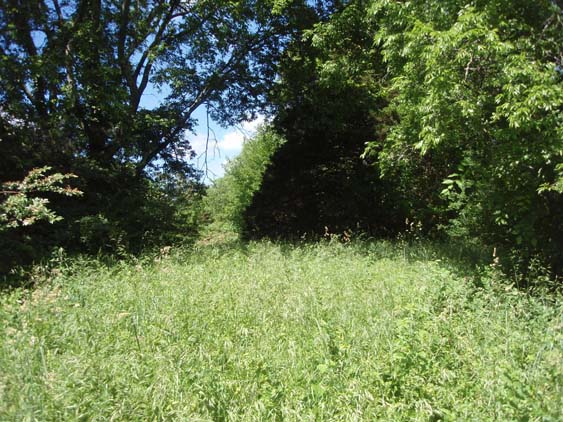
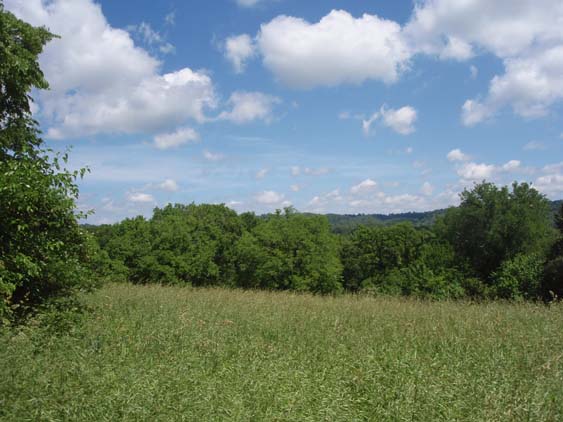
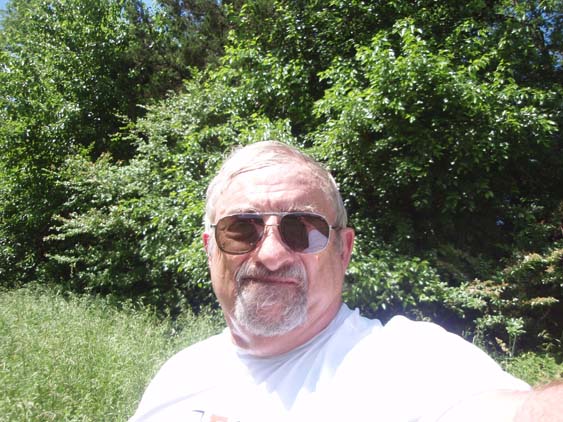
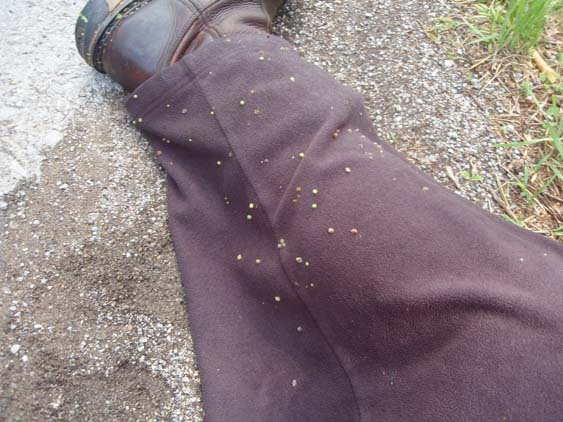
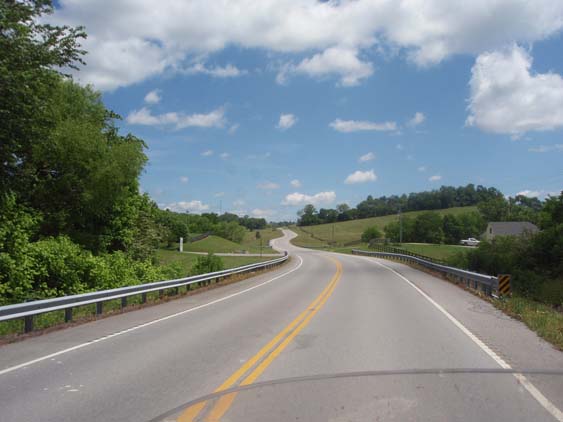
On the top of the hill that was the Union main position, is an original family cemetery. As was the custom in the area in those days, grave sites were marked by carefully stacked stones on top of the grave. Also on this hilltop is the first Confederate Cemetery in the United States.
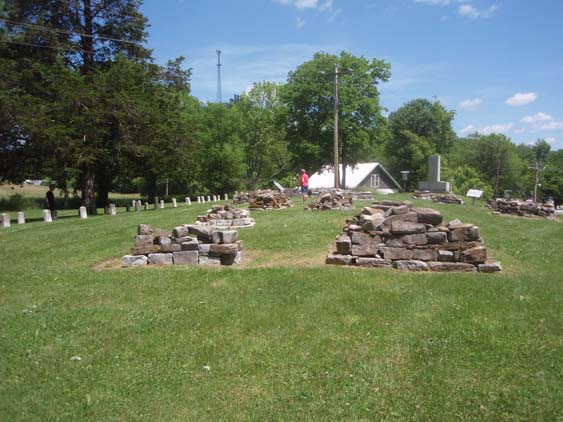
Here is the story -
The Beech Grove Confederate Cemetery
High atop a hill, with the Confederate battle flag flying proudly in the
breeze, nestled between the hustle and bustle of busy Interstate 24 and
U.S. 41 just about halfway between Murfreesboro and Manchester, is the
first Confederate cemetery to be established after the War Between the
States. It also holds the distinction of being the final resting place
for 50 unknown Confederate soldiers who were killed at the Battle of Hoover's
Gap, where Spencer Repeating Rifles were first used by Union troops. Despite
the changing character of surrounding lands evolving into twenty-first
century icons, the integrity of this small cemetery, and the tranquility
of that place in time, still exists today.
The following is a letter published in the Manchester Times newspaper
in 1904 by Civil War veteran and former resident of Beech Grove, William
Hume, which tells the story of how the cemetery came into being -
Dear Friend and Comrade,
As you are aware, nearly every man able to bear arms in the First, Second,
and Third Districts of Coffee County, and in the adjoining districts of
Rutherford and Bedford Counties, was in the Confederate Army, and made
the best of soldiers.
In the spring of 1866, quite a number assembled at Beech Grove, and reports
were made that many Confederate soldiers had been hastily buried in the
fields and pastures nearby, and in some instances the graves were so shallow
that portions of the remains were showing. These men all having lately
returned to their homes-with fences and stock to a great extent destroyed
or stolen and the country devastated-at once agreed to have all these
bodies of Confederate soldiers taken up and given a suitable resting place.
They selected the top of the hill in the old graveyard on the Manchester
Pike, near the Rutherford County line, and in full view of the Manchester
Pike, on the land owned by David Lawrence. They then had a nice walnut
coffin made for each and re-interred there, putting head-boards on each
grave, but being unable to put any name, as all were unknown. They also
put a nice paling fence around the graves.
This was done by the people there at their own expense, never having called
on any other section for help, and was the first Confederate Soldiers'
graveyard in the South that I have any knowledge of.
The majority of these veterans and their fathers who did this work are
dead. Possibly Stokley Jacobs, Bud Jacobs, and Henry Bivins could give
you some information in regard to this.
I think it is due your country to have this honor, as it was done at a
time when the Confederate soldier did not occupy the position in the State
of Tennessee and the United States that he does today, and was entirely
the work of love for fallen comrades.
Yours,
Wm Hume
Manchester Times, March 25, 1904
At the time this cemetery was chosen as the final resting place for these
fifty unknown Confederate soldiers, there were a few family graves, including
one Revolutionary War Soldier, on the site. In 1942, one other Confederate
veteran was buried there. For many years it was cared for by local residents
and former veterans. Despite their efforts, it fell into a state of disrepair
and vandalism became a serious problem. Then in the early 1950's, $5,000
in state money was appropriated to replace the deteriorating and missing
original grave markers. Through the efforts of the late David Jacobs,
a retired educator and historian, and with the help of the Sons of Confederate
Veterans, an additional $5,000 was raised. The land was purchased and
the cemetery dedicated in 1955. Mr. Jacobs was its caretaker until his
death in 1993. The SCV continues to care for the cemetery at present.
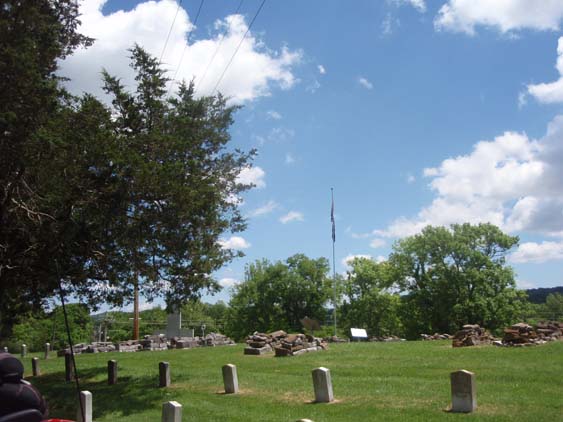
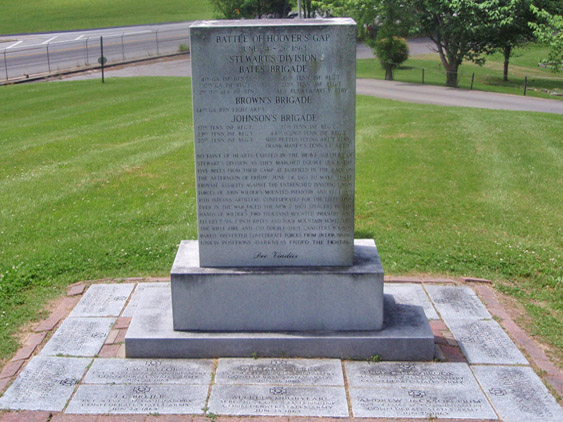
Here are some very interesting and unusual notes about the battle -
Company E, of the 72nd Indiana overran its position and while returning to the battle line, and being fired upon by Confederates, came across three small children, two girls and a boy, trying to find their way out of the woods amid the shower of bullets. The firing suddenly stopped. Sgt. Wilhite of the 72nd dismounted, helped the children over a fence and headed them toward a house out of range of the battle. The fighting then resumed and Company E went about its business of fighting its way back to the brigade.
The 4th Division of MG Joseph Reynolds spearheaded by Colonel John T. Wilder, at the head of the "Lighting Brigade" of mounted infantry and armed with Spencer rifles, moved into the four-mile-long valley of Hoover's Gap and opened the Tullahoma Campaign . With the firepower of the Spencer rifles and an excellent artillery battery, under command of Captain Eli Lilly, Wilder prepared for the counter attack that was sure to come.With the gap now completely in his grasp Wilder prepared to defend his prize. He set his defense for the expected Confederate response by placing 2 companies of the 98th Illinois to the left of the road on the only acceptable terrain, a small hill with the remainder forming a reserve. To the right of the road the Union line started with the 72nd Indiana on "a hillock on which there was a graveyard". They were supported by two mountain howitzers which were placed on the front of the hill. Captain Eli Lilly's six ten-pound Rodman's anchored the center from a hill set back slightly from the main line. They were supported by the 123rd Illinois. The right was held the 17th Indiana. The mounted men had pushed about six miles ahead of the main infantry column and would have to hold out long enough for their support to close the distance. The rain and accumulated gun smoke had settled in the gap and made visibility an issue. Nevertheless the 20th Tennessee and Caswell's (Georgia) Battalion pushed across the field in an effort to flank the 17th Indiana. Wilder responded by dispatching the reserve companies of the 98th to extend the line there. They arrived just as the Confederate line had succeeded in turning the position. The reinforcements greeted the attackers with a "tornado of death" at about 100 yards. The volume of fire emanating from the Federal line drove the Confederates to the ground and they were forced to crawl back to safety. At this point in the fight a messenger from division headquarters arrived with instructions for Wilder. Recalling the episode 44 years later Wilder described the situation this way -
"Captain Rice, adjutant-general of the division, came riding speedily to the front with orders from General Reynolds to me to fall back immediately, as the division was six or eight miles in our rear, having stopped to repair a bridge, without letting me know of it. I told him I would hold this position against any force, and to tell General Reynolds to come on without hurrying, as there was no danger of our being driven out of the position. Capt. Rice repeated his order for me to fall back, and I told him I would take the responsibility of remaining where I was, and that if General Reynolds were on the ground he would not give such an order. Capt. Rice said that he had no discretion in the matter, and that if I did not obey the order he would put me in arrest and give the command to Colonel Miller, who would fall back as ordered. I declined to obey the order of arrest, and requested Captain Rice to return to General Reynolds and tell him we had driven their force back, and could not be driven by any forces that could come at us."
The 1,500 Spencer repeating rifles were capable of firing 14 rounds per minute and proved to be the difference between Union forces and the numerically superior Confederates. General Thomas declared following the day's battle that he had not expected to capture the gap for three days and that henceforth Wilder's men would be known as the "Lightning Brigade." Over two hundred, or nearly one fourth of the Confederate forces, were killed or wounded at Hoover's Gap while Wilder's Brigade suffered only fifty-one casualties. General Bate later commented that judging from the fire power of the Union force, he thought he was outnumbered five to one. It may very well be that this first encounter with repeating rifles at Hoover's Gap was the beginning of the expression which traveled around the Confederate army for the remainder of the war, that the "Yankees could load on Sunday and shoot all the rest of the week."
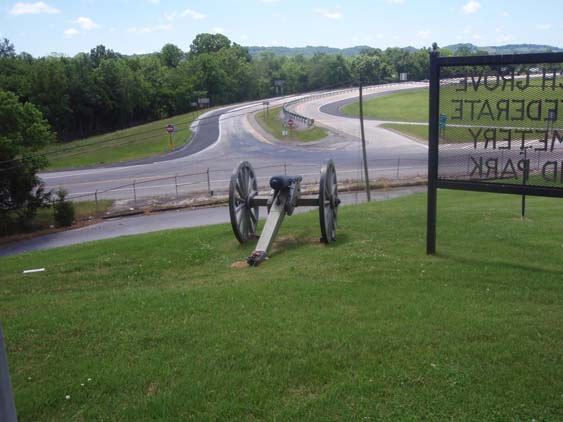
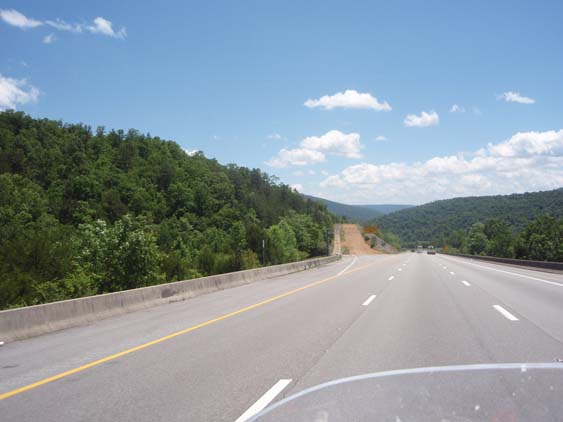
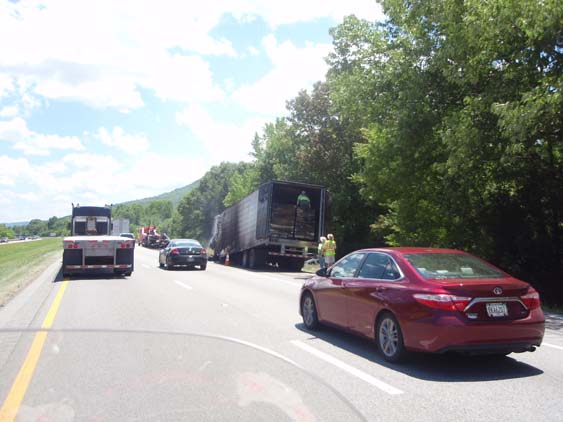
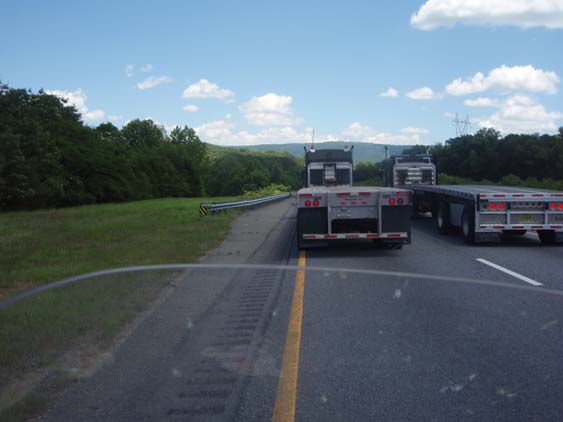
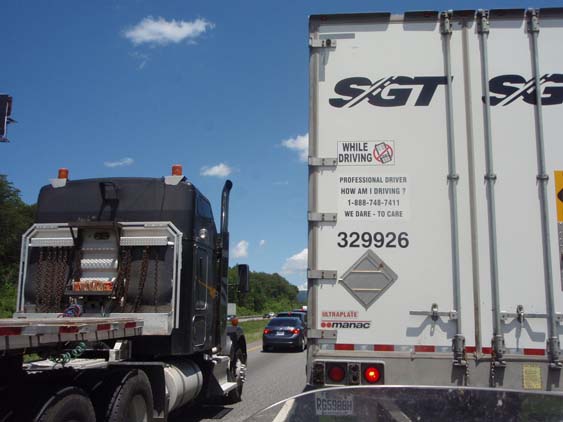
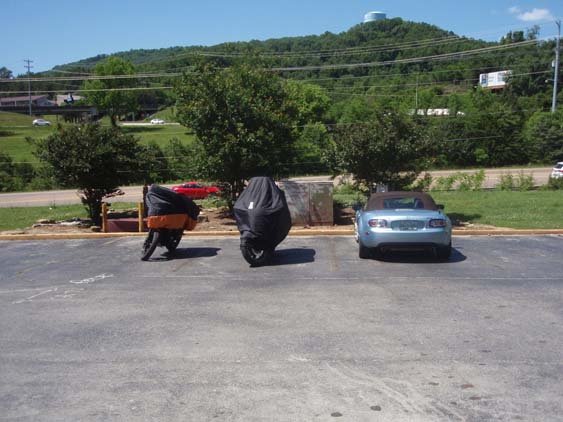
 |
 |